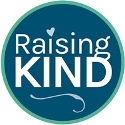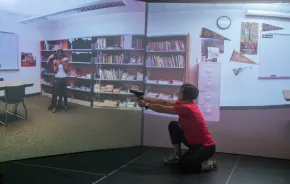
A constant parental conundrum is how to help children not only learn about differences in others, but also to appreciate them. Literature is a wonderful way to teach kids about such topics. Here is a list of nine books with characters and plots that help kids understand and appreciate differences, ranging from deafness to autism.
 Ian’s Walk, by Laurie Lears
Ian’s Walk, by Laurie Lears
Ages 8–13
Ian's Walk follows the story of a young boy who sees the world differently: He has autism. Most of the story is told from the perspective of his older sister Julie, who understandably becomes frustrated with Ian at times.
Ian does not find joy the same way that others do. For example, he prefers the smell of bricks to to the smell of flowers. As he and Julia go on their walk, readers learn to appreciate Ian's perspective and appreciate the simple aspects of life.
There is a lasting message that it can be better to go with the flow instead of expecting others to conform to your expectations.
Ben Has Something to Say, by Laurie Lears
Ages: 5–9
Also by Laurie Lears, Ben Has Something to Say introduces children to another difference: stuttering. The main character Ben does not interact with his classmates. Because of his stutter, he engages in as little verbal communication as possible.
But his world changes during a routine trip to the local junkyard with his dad. Ben sees a dog, Spike, and falls in love instantly. Spike listens to Ben and makes him feel safe. In Spike’s presence, Ben is no longer afraid to speak. Eventually, Ben steps out even further and gathers the courage to speak up to save Spike’s life. The book presents a wonderful opportunity for parents to discuss reasons children choose not to engage in social settings, and the importance of standing up for something — even when it’s difficult.
 Moses Goes to School, by Isaac Millman
Moses Goes to School, by Isaac Millman
Ages: 5–9
The first book in the “Moses” series, Moses Goes to School follows a young deaf boy named Moses who attends a school where everyone is deaf or hard of hearing. On their first day back at school after summer break, Moses and his classmates catch up on their friendships (communicating in American Sign Language) and attend classes, even music class. Besides seeing that a school for deaf children has a lot in common with other schools, young readers are introduced to basic American Sign Language, and will even learn an ASL song in the course of the book.
You Can Be a Friend, by Lauren Harris and Tony Dungy
Ages: 4–7
Has your child ever hesitated to interact with individuals who look different? She may relate to the story of Jade, who is playing with her brothers when she sees new neighbors moving in. As the only girl in a family of three boys, Jade has longed for a new girlfriend. But she did not expect for the friend to be in a wheelchair. The story carries an age-old message of appreciating differences – but with an unexpected twist. As she becomes friends with Hannah, Jade needs to re-evaluate her plan to have a longed-for birthday party at a waterpark. Can she enjoy herself at a place that can’t accommodate her new friend? She had some decisions to make.
 Knockin’ On Wood, by Lynne Barasch
Knockin’ On Wood, by Lynne Barasch
Ages: 6–9
Knocking on Wood, which takes place a few decades after the abolition of slavery, is a gentle, true story that tackles tough issues ranging from physical disability to racism and segregation. Peg Leg Bates, a boy with a lifelong love of dancing, loses his leg at the age of 12 in a factory accident. Despite the loss of a limb Peg Leg continues to dance. As a black man from the south and an amputee, he has many obstacles to overcome but lets none stop him, eventually finding world renown as a dancer. Parents should be prepared to answer some challenging questions on the history of race in America.
El Deafo, by Cece Bell
Ages: 8-12
This humorous graphic novel is based on the experiences of author-artist Cece Bell, who lost her hearing due to meningitis in early childhood. Cece moves to a new town, and has to fit in and find new friends, despite her obvious differences – including having to wear a clunky “Phonic Ear” hearing aid to help her understand her teachers. The Phonic Ear, though, has a surprising upside: Cece is able to track and report on her teachers’ actions. With her special powers Cece develops an alterego – “El Deafo – who has the power to act more courageously than in real life. In the process, she learns about true friendship.
Bell’s graphic novel format makes this book ideal for young children who are just learning to read independently.
 Deenie, by Judy Blume
Deenie, by Judy Blume
Ages: Young adult
Deenie approaches the topic of disability and all the social effects that come with it. One of my favorite authors since childhood, Judy Blume always delivers. Deenie explores the social impact of disability through the story of a young adolescent girl who has always been regarded as beautiful by her mother — in fact, her mother has been pushing Deenie towards modeling. When a diagnosis of scoliosis and a back brace changes everything for Deenie, she gets a taste of what it’s like to be on the outside. Key themes in the book include looks, love and friendship.
All in Pieces, by Suzanne Young
Ages: Young adult
Suzanne Young said in an interview that All in Pieces was filled with raw emotion because it was written shortly after the loss of her grandmother. The book stars a central character with a less-discussed struggle. Savannah Sutton is a young girl who does all she can to take care of her younger brother who has special needs, while also enduring the stigma attached to being seen as a girl with “anger issues.” Despite a challenging life, Suzanne does her best to navigate the world around her with the help of friends who are often more family to her than her actual family. The book touches on themes of love, maturity and dedication, which can be seen in everything from Savannah’s affection for her younger brother to her love interest, Cameron.
 Colin Fischer, by Ashley Edward Miller and Zach Stentz
Colin Fischer, by Ashley Edward Miller and Zach Stentz
Ages: Young adult
Colin Fischer is a boy with severe Asperger’s who sees life in a rich and individual way. He needs things done a certain way to feel comfortable. He’s not social (he uses flash cards to understand facial expressions). Most of the time he is content spending time in his own head, but when Wayne, a boy who has bullied him, is accused of a crime, Colin uses his detailed powers of observation to solve the crime and prove Wayne’s innocence.












